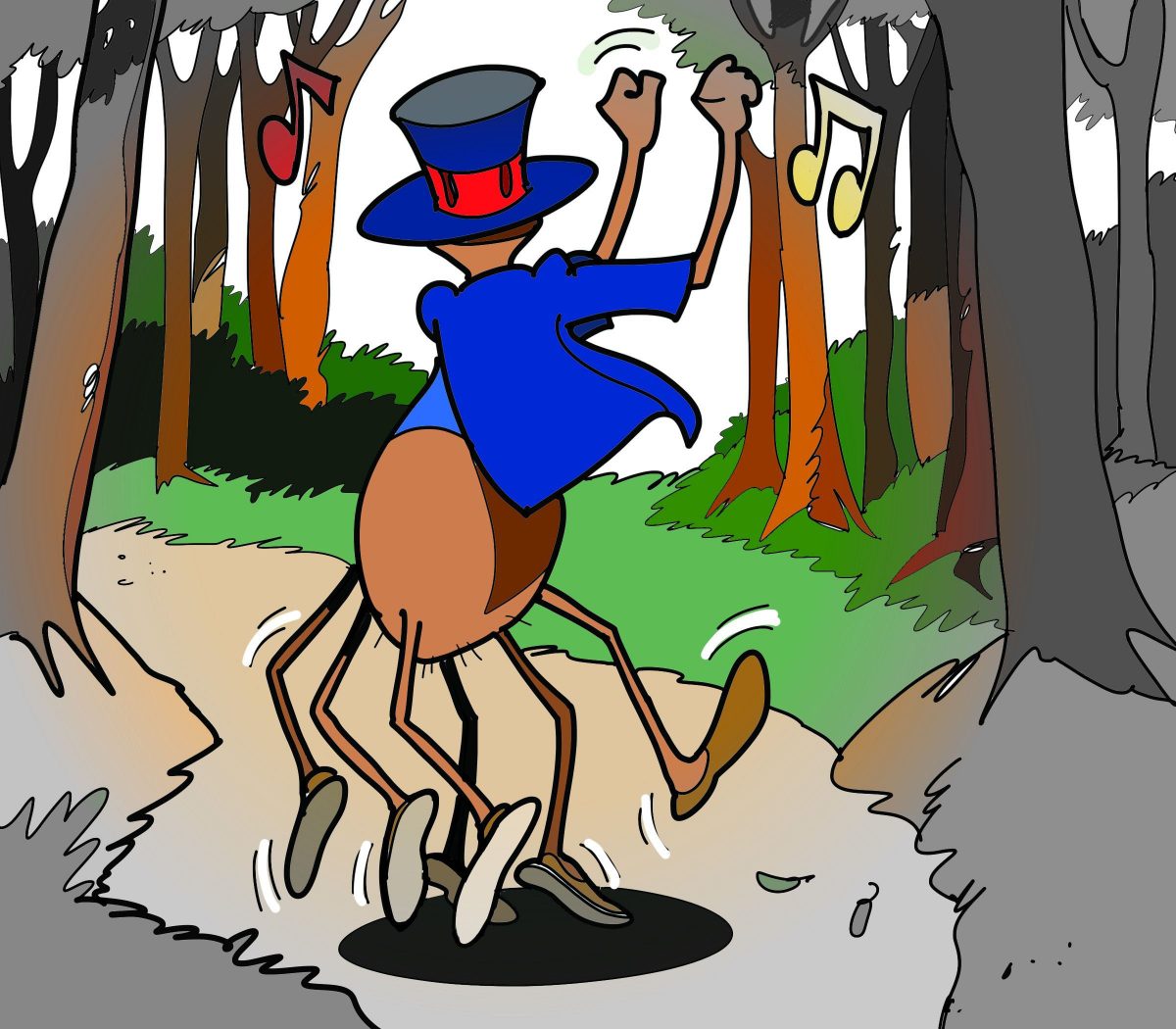The dramatic play Anansi by Alistair Campbell will shortly be broadcast on radio. This is significant because although the drama has been in existence since 1990, it was not in very active circulation in the Caribbean until recently, and mostly because it has been placed on the Caribbean Examinations Council (CXC) syllabus. It rocketed to attention around the region when it became one of the prescribed texts for study in the Caribbean Secondary Education Certificate – English B (Literature) in 2022.
The National Centre for Educational Resource Development (NCERD) in collaboration with the National Drama Company (NDC) will present the play Anansi dramatised for radio by the NDC. It will be broadcast on the Learning Channel as a joint production of the NDC and the Distance Education and Information Unit, known as EdYou FM on which it will be aired.
The NDC, as a theatre company, has a mission to produce stage performance that improves and advances the frontiers of high quality drama. It is made up initially of trained performers and practitioners who graduated from the National School of Theatre Arts and Drama (NSTAD) and is part of the concept behind the offer of training and practice by the NSTAD. The company is the professional performing arm of the school since it puts into practice what has been taught at the school and continues avant-garde theatre techniques and explorations through research, continued learning and practice in public performances. Partly because of this, since its inauguration in 2015, the NDC has effected a mandate to contribute to drama education by helping secondary schools while producing public theatre for a wide and general audience.
When Anansi opens on radio around the end of July to early August, it will be the fifth production in a series which began with the performance of plays which were being studied by students for CXC. The first was a stage performance of Derek Walcott’s Ti Jean and His Brothers directed by Subraj Singh and Al Creighton. This was followed by Wole Soyinka’s The Lion and the Jewel, directed by Nicholas Singh and Ayanna Waddell, and then by an excursion into Shakespeare. The Tempest was directed by Esther Hamer and Keron Bruce, followed by a re-staging of Ti Jean and His Brothers. It was the outbreak of the COVID-19 pandemic in 2020 that prompted the move to radio.
With the theatres closed, the NDC felt it could make a meaningful contribution by producing for radio. This was done with the recording of Ti Jean, which was repeated several times over a very long period. Although the NDC returned to the stage in February, 2023, the radio expedition had worked so well that the Distance Education and Information Unit invited the NDC to undertake another venture. Campbell’s Anansi directed for radio by Creighton with music by Kimberly Samuels. This was made possible by a team that by now has become quite accomplished. Waddell is the Executive Producer with Tashandra Inniss as Production Manager and Hamer as performance and sound effects Editor. Sound Engineer is Addel Sultan and Technical Editor Ingrid Baird.
Anansi
Anansi was first performed in September 1990 by Breakout Theatre in Education Company. It was published in the UK in print by Nelson Thornes Ltd in 1999, and by Oxford Playscripts of the Oxford University Press in 2013. It was based on Campbell’s research of the mythical folk hero Brer Anansi (or Anancy) commonly known all around the Caribbean. Anansi stories are a major component in the oral literature of the West Indies and a very popular factor in the Caribbean’s storytelling tradition. These stories have survived for centuries and have been widely exchanged among the islands and Guyana as well known tales in the trickster tradition in the region’s oral literature. They were brought to the Americas by enslaved Africans from their places of origin among cultures and nations of West Africa, particularly the Ashanti. The trickster hero Anansi is a spider who revels in his dominance over all other animals in the forest because of his superior wit, intelligence and cunning. He is among the smallest of the animals but exhibits extraordinary brain power to outwit all, including humans. He lives by his wits which allow him to escape danger and to defeat powerful adversaries such as the ferocious tiger and those in high authority such as kings. He is therefore a champion for the folk and the unprivileged as he is thought to have been for the enslaved people who preserved his stories, laughed at and admired his adventures and triumphs.
The play is about how Anansi came to Jamaica and the role that he played in the trans-Atlantic voyage. He was a source of inspiration, encouragement and contributed to the ability of the kidnapped people to survive the horrendous Middle Passage on board the ships. Equally, the play illustrates how stories were a source of delight to the people in the West Indian setting. The play tells the story of a young girl who finds herself among many imprisoned and bound in the hold of a slave ship that sails from West Africa in 1791 heading for Jamaica. Throughout the journey she is bound to an old woman who is tied behind her, so this woman is never seen by the girl or by the audience. However, her voice is heard as she constantly talks to the girl and tells her Anansi stories. These are dramatised in the play. The woman serves as a mother to the girl, helping her through her suffering while using the story of Anansi as a vital means of amusement and survival. Right through the voyage, the girl can see a small spider building his web. Although the woman’s back is turned to the area in the hold where the spider perseveres in the darkness, it is as if she can see, and is able to tell the girl all about him. That spider is Anansi, and the play dramatises how he came to the Caribbean and how he served as a source of inspiration to the enslaved people. The mysterious woman is a font of spiritual strength. She seems to have a life that extends beyond the sea voyage and guides the girl until the ship arrives in Kingston Harbour.
Also on board the ship are the captain, his son and a sailor who is befriended by the boy who needs some escape and support against a tyrannical father. The captain is a fixed type. He runs an English slave ship with the typical infamous attitude of a trader in commodities, for whom the enslaved are cargo being transported for sale and who are insured against loss and damage. The ship is afflicted by an unidentified illness manifested by coughing, and any of the Africans who show the symptoms are callously thrown overboard to prevent them infecting others. It is efficient business practice for the captain, orders and routine work jettisoning damaged commodities for the sailor, but a cause of trauma and discomfort for the boy who cannot see the Africans as less than human. These characters help to guide the audience through some of the horrors of the slave trade that Campbell dramatises in the play.
Even within this there are ironies, since by the end of the voyage, the captain himself catches the fever, falls ill and the boy has to take over his duties. He steps into his father’s shoes efficiently, hardening his previous humane feelings and quickly growing up to be a slave trader. Moreover, the name of the slaving vessel is “The Good Ship Hope” in stark conflict with the boat’s trade and purpose. It is a Christian vessel with a Christian captain who praises God thus: “Thanks to the grace of God we have lost only 150 slaves and 12 crew on our seven-week passage”. He is more concerned about the threat of “maimed, defective or diseased slaves lowering the average price” than he is for the loss of life, and for the fact that he actually cast sick but living slaves overboard. He is satisfied that insurance will be paid.
The play is structured around two settings – on board the ship and in what is called “the forest of stories”. The main plot covers what passes on board during the Atlantic voyage, which includes the woman telling the Anansi stories to the girl. Each story shifts the scene to the forest, so the play alternates between the ship and the forest. The scenes on board are solemn, tragic and filled with pathos, since it is the inhuman Middle Passage. In contrast, the stories are light, full of energy and comic, since they present a life in which characters have survived and they represent storytelling traditions which are lively and dramatic. Campbell makes much use of parody in stories which are highly influenced by the European fairy tale. Right through, he uses sharp comedy to emphasise the difference between the dark horror of the trans-Atlantic passage following the traumatising departure from West Africa and the life in the Caribbean transported by the cultural traditions.
The cast
In this radio drama the lead role of the Girl is played by Allia George, with Nickose Layne playing Anansi and Kimberly Samuels as the Woman in the ship. In other principal male roles, Mark Luke-Edwards plays the Captain, Nicholas Singh is the Sailor and Layne plays the Boy. This radio version of the play utilises two narrators. The first is Lorraine Baptiste and second LeTisha Da Silva. Within the Anansi stories, Tiger is played by Keon Heywood, the witch called “Her” is Deandra Daniels, Snake is Jonathan Hamer, Luke-Edwards is the King and Akbar Singh plays Soliday. A variety of other roles are played by Renita Dyndial, Frederick Minty, Kimberly Fernandes, Inniss and Waddell. Music is an integral part of this production, and apart from her role as musical director, Samuels plays the violin, recorder and keyboard, while the drums are by Creighton.
Performance dates will be announced by EdYou FM radio.





